Manual Lymphatic Drainage
Table of Contents
What is a Manual Lymphatic Drainage?
Manual lymphatic drainage (MLD) is a massage technique that is designed to improve the function of the lymphatic system, which is responsible for removing waste and toxins from the body. The lymphatic system plays a crucial role in maintaining overall health, but it can become compromised due to a variety of factors, including surgery, injury, or illness. MLD can help to stimulate lymphatic flow and promote the body’s natural healing processes, leading to reduced swelling, pain, and other symptoms associated with lymphatic dysfunction.
Developed in the 1930s by Danish physiotherapist Dr. Emil Vodder, MLD involves gentle, rhythmic massage strokes that are intended to mobilize lymphatic fluid and move it toward the lymph nodes, where it can be processed and eliminated from the body. This technique can be used to treat a wide range of conditions, including lymphedema, fibromyalgia, chronic fatigue syndrome, and even depression and anxiety. It is also commonly used in the post-operative period to speed up recovery and reduce swelling and pain.
Principles of Manual Lymphatic Drainage
The principle of manual lymphatic drainage (MLD) is based on an understanding of the lymphatic system’s anatomy and physiology. The lymphatic system is a network of vessels, nodes, and organs that work together to remove waste and toxins from the body and maintain the balance of fluids in the tissues. However, unlike the cardiovascular system, the lymphatic system does not have a central pump to move lymphatic fluid, and it relies on the contraction of muscles, breathing, and external stimuli to stimulate lymphatic flow.
The principle of MLD is to use gentle, rhythmic massage strokes to stimulate the lymphatic system’s natural mechanisms and improve lymphatic flow. The therapist uses specific techniques, such as gentle pressure, light stretching, and circular movements, to stimulate the lymphatic vessels’ contraction and promote the movement of lymphatic fluid toward the lymph nodes.
The pressure used in MLD is very light and gentle, as excessive pressure can cause damage to the lymphatic vessels and impair lymphatic flow. The massage strokes are performed in a specific sequence and direction, following the natural flow of lymphatic fluid. The therapist may also focus on specific areas of the body that are affected by lymphatic dysfunction, such as swollen limbs or congested lymph nodes.
The principle of MLD is based on the understanding that the lymphatic system plays a vital role in maintaining overall health and that improving lymphatic flow can promote healing and reduce symptoms associated with lymphatic dysfunction. By stimulating lymphatic flow, MLD can help reduce swelling, improve immune function, and promote overall well-being.
Goals of Manual Lymphatic Drainage
The goals of manual lymphatic drainage (MLD) are to improve lymphatic function, promote lymphatic flow, reduce swelling, and alleviate symptoms associated with lymphatic dysfunction. MLD is a specialized massage technique that is designed to stimulate the lymphatic system, which is responsible for removing waste and toxins from the body and maintaining overall health.
The specific goals of MLD include the following:
• Improving lymphatic flow: The primary goal of MLD is to stimulate lymphatic flow and promote the movement of lymphatic fluid towards the lymph nodes. This can help to remove waste and toxins from the body and improve overall health.
• Reducing Swelling: MLD can help reduce swelling caused by lymphatic dysfunction, such as lymphedema or post-operative swelling. By mobilizing lymphatic fluid, MLD can reduce the accumulation of fluid in the tissues and improve circulation.
• Alleviating pain: MLD can help to alleviate pain caused by lymphatic dysfunction, such as post-operative pain or chronic pain associated with fibromyalgia or chronic fatigue syndrome. By reducing swelling and improving circulation, MLD can reduce pressure on the nerves and alleviate pain.
• Improving immune function: The lymphatic system plays a crucial role in immune function, and MLD can help to improve lymphatic flow and promote immune function. This can help reduce the risk of infection and improve overall health.
• Promoting relaxation: MLD is a gentle, rhythmic massage technique that can promote relaxation and reduce stress. This can help promote overall well-being and improve the quality of life.
The goals of MLD are to improve lymphatic function, reduce swelling and pain, promote immune function, and promote relaxation and overall well-being. By stimulating lymphatic flow and promoting the body’s natural healing processes, MLD can help improve overall health and reduce the symptoms associated with lymphatic dysfunction.
Types of Manual Lymphatic Drainage
There are several types of manual lymphatic drainage (MLD) techniques that can be used to stimulate lymphatic flow and promote overall health. The most commonly used techniques include:
- Vodder Technique: This is the original MLD technique developed by Dr. Emil Vodder and his wife, Estrid Vodder. It involves gentle, rhythmic massage strokes that are intended to mobilize lymphatic fluid and move it toward the lymph nodes. The Vodder Technique is used to treat a wide range of conditions, including lymphedema, fibromyalgia, chronic fatigue syndrome, and post-operative swelling.
- Foldi Technique: This technique was developed by Michael Foldi and is based on the Vodder Technique. It involves more vigorous massage strokes and may be used to treat more severe cases of lymphedema or other lymphatic disorders.
- Leduc Technique: This technique was developed by Dr. Albert Leduc and involves a combination of manual lymphatic drainage and compression therapy. The Leduc Technique may be used to treat lymphedema or other lymphatic disorders that require more intensive treatment.
- Casley-Smith Technique: This technique was developed by Judith Casley-Smith and is used to treat lymphedema. It involves a combination of manual lymphatic drainage, compression therapy, and exercise therapy.
- MiKlose Training Technique: This technique was developed by Guenter Klose and is used to treat lymphedema. It involves a combination of manual lymphatic drainage, compression therapy, and exercise therapy.
Overall, the type of MLD technique used will depend on the individual’s specific needs and the severity of their lymphatic dysfunction. Working with a qualified therapist who is experienced in MLD can help to determine the best technique for each individual case.
Indications of Manual Lymphatic Drainage
Manual lymphatic drainage (MLD) may be indicated for a variety of conditions related to lymphatic dysfunction, including:
- Lymphedema: MLD is a primary treatment for lymphedema, which is a condition that occurs when the lymphatic system is unable to properly drain lymphatic fluid from the affected area. MLD can help to reduce swelling, improve lymphatic flow, and prevent further damage to the lymphatic system.
- Post-operative swelling: MLD may be indicated after surgery to reduce swelling and promote healing. By stimulating lymphatic flow, MLD can help remove excess fluid from the tissues and promote the body’s natural healing processes.
- Fibromyalgia and chronic fatigue syndrome: MLD may be indicated for individuals with fibromyalgia and chronic fatigue syndrome to help manage symptoms such as chronic pain and fatigue. By reducing swelling and improving circulation, MLD can help alleviate pain and promote relaxation.
- Sports injuries: MLD may be indicated for individuals with sports injuries, such as sprains and strains. By promoting lymphatic flow and reducing swelling, MLD can help speed up the healing process and reduce pain.
- Immune system support: MLD may be indicated for individuals who wish to support their immune system and improve overall health. By promoting lymphatic flow, MLD can help to remove toxins and waste from the body, reduce the risk of infection, and promote overall well-being.
- Skin conditions: MLD may be indicated for individuals with skin conditions, such as acne and rosacea. By promoting lymphatic flow, MLD can help remove toxins and waste from the body, improve circulation, and promote healthy skin.
Overall, MLD may be indicated for individuals with any condition that is related to lymphatic dysfunction or compromised immune function. Working with a qualified therapist who is experienced in MLD can help determine if MLD is the appropriate treatment for a specific condition.
Contraindications
Manual lymphatic drainage (MLD) is generally considered safe and well-tolerated for most individuals. However, there are some contraindications and precautions that should be taken into consideration. These include:
- Acute infections: MLD should not be performed during the acute stage of infection. This includes infections such as cellulitis, erysipelas, and lymphangitis.
- Malignant tumors: MLD should not be performed over or near malignant tumors, as it may promote the spread of cancer cells.
- Deep vein thrombosis: MLD should not be performed on individuals with a history of deep vein thrombosis (DVT), as it may dislodge blood clots and increase the risk of pulmonary embolism.
- Cardiac edema: MLD should not be performed on individuals with cardiac edema, as it may worsen the condition and lead to heart failure.
- Kidney problems: MLD should be used with caution in individuals with kidney problems, as it may increase the load on the kidneys and exacerbate the condition.
- Acute asthma attacks: MLD should not be performed during an acute asthma attack, as it may exacerbate breathing difficulties.
- Open wound: MLD should not be performed over open wounds or areas of compromised skin, as it may increase the risk of infection.
- Pregnancy: MLD should be used with caution in pregnant women, particularly in the first trimester, as there is a risk of miscarriage.
Overall, it is important to discuss any medical conditions or concerns with a qualified therapist before undergoing MLD. They will be able to assess whether MLD is appropriate and safe for each individual case.
Techniques of Manual Lymphatic Drainage
There are several techniques used in manual lymphatic drainage (MLD) to stimulate lymphatic flow and reduce swelling. These include:
• Stationary circles: This technique involves making small, circular motions with the fingertips over the lymph nodes. This helps to stimulate lymphatic flow and can be used to treat swelling in the neck, armpits, and groin.
• Pumping: Pumping involves rhythmic movements of the hands, which help move lymphatic fluid through the vessels. This technique is often used to treat swelling in the limbs.
• Rotary technique: The rotary technique involves making circular motions with the flat of the hand. This helps to move lymphatic fluid through the vessels and can be used to treat swelling in the limbs and abdomen.
• Scooping: Scooping involves using the hands to scoop up lymphatic fluid and move it toward the lymph nodes. This technique is often used to treat swelling in the legs.
• Stretching: Stretching involves gently pulling on the skin to create tension, which helps stimulate lymphatic flow. This technique is often used to treat swelling in the face and neck.
• Cross-fiber strokes: Cross-fiber strokes involve using the fingers to apply pressure across the fibers of the lymphatic vessel walls. This helps to break up any blockages and stimulate lymphatic flow.
• Deep breathing: Deep breathing is often incorporated into MLD to help stimulate lymphatic flow and promote relaxation.
It is important to note that MLD should only be performed by a qualified therapist who has received specific training in the technique. The therapist will tailor the treatment to the individual needs of the client, taking into consideration their medical history and any contraindications to treatment.
Advantages
Manual lymphatic drainage (MLD) is a specialized massage technique that is used to stimulate the flow of lymphatic fluid throughout the body. Here are some potential advantages of MLD:
- Reducing swelling and edema: MLD can help to decrease swelling caused by lymphedema, surgery, injury, or other conditions. By promoting the movement of lymphatic fluid, MLD can help reduce excess fluid buildup and improve circulation.
- Boosting immunity: The lymphatic system plays an important role in the immune system, and MLD can help to activate lymph nodes and stimulate lymphatic flow, which may enhance immune function.
- Enhancing relaxation: MLD is a gentle and soothing massage technique that can promote relaxation and reduce stress. It may also help relieve pain and improve sleep quality.
- Improving skin health: MLD can help to improve the appearance and health of the skin by promoting lymphatic drainage and increasing blood flow to the skin.
- Supporting post-operative healing: MLD is often used as part of post-operative care to help reduce swelling and improve healing after surgeries such as breast cancer surgery or liposuction.
It is important to note that while MLD can be beneficial for certain conditions, it may not be appropriate for everyone. It is always best to consult with a qualified healthcare provider before starting any new treatment or therapy.
Disadvantages
Manual lymphatic drainage (MLD) is generally considered to be a safe and non-invasive technique with few side effects. However, there are some disadvantages or limitations to consider, including:
- Limited research: There is limited research on the effectiveness of MLD for some conditions, and more studies are needed to fully understand its benefits.
- Time-consuming: MLD can be a time-consuming process, as it often requires multiple sessions over an extended period of time.
- Requires specialized training: MLD should only be performed by a qualified therapist who has received specialized training in the technique. This can make it difficult to access in some areas or for some individuals.
- Not suitable for everyone: There are certain contraindications to MLD, including acute infections, deep vein thrombosis, and malignant tumors. This means that MLD may not be suitable for everyone and should be approached with caution in certain cases.
- Cost: MLD sessions can be expensive and may not be covered by insurance, making them less accessible for some individuals.
- Need for maintenance: In order to maintain the benefits of MLD, ongoing sessions may be required. This can be costly and time-consuming for some individuals.
It is important to discuss any potential disadvantages or limitations of MLD with a qualified therapist to fully understand whether it is the right treatment option for an individual’s specific needs and circumstances.
Conclusion
Manual lymphatic drainage is a safe and effective therapy that can be used to improve lymphatic function and promote overall health and well-being. If you are struggling with swelling, pain, or other symptoms related to lymphatic dysfunction, MLD may be an excellent option to explore. Be sure to work with a qualified therapist who is experienced in this technique to ensure the best possible results.
FAQs
What is manual lymphatic drainage?
Manual lymphatic drainage (MLD) is a specialized massage technique that is used to stimulate the flow of lymphatic fluid throughout the body. The lymphatic system is a network of vessels and tissues that helps to remove waste and toxins from the body as well as playing a role in immune function.
Is lymphatic massage painful?
No, lymphatic massage, also known as manual lymphatic drainage (MLD), should not be painful. In fact, it is a gentle and soothing massage technique that is intended to be relaxing and therapeutic.
While MLD should not be painful, it is possible that some individuals may experience mild discomfort or sensitivity during the massage, particularly if they have a lot of swelling or inflammation in the affected area. In such cases, the therapist can adjust the pressure and technique to ensure that the massage is comfortable and effective. It is important to communicate with the therapist throughout the session to ensure that the massage is tailored to your individual needs and preferences.Can lymphatic massage help weight loss?
Lymphatic massage, also known as manual lymphatic drainage (MLD), is not intended as a weight-loss therapy. However, it may have some indirect benefits that could support weight-loss efforts.
MLD is a massage technique that is used to stimulate the flow of lymphatic fluid throughout the body, which can help to reduce swelling, improve circulation, and support immune function. It can be particularly useful for individuals who have swelling or fluid retention due to conditions such as lymphedema, post-surgical swelling, or injury.
While MLD may not directly lead to weight loss, it may help to support a healthy lifestyle by reducing stress, improving circulation, and promoting relaxation. Additionally, some people may experience a temporary reduction in weight due to the removal of excess fluid from the body following an MLD session.
It is important to note that MLD should not be used as a substitute for a healthy diet and exercise routine.What are the benefits of lymphatic drainage massage?
Lymphatic drainage massage (also known as manual lymphatic drainage or MLD) has several benefits, including:
Reducing swelling and fluid retention
Promoting healing
Supporting immune function
Reducing stress and promoting relaxation
Improving skin health
Supporting overall health and wellnessWhat are the side effects of lymphatic drainage?
Lymphatic drainage is a gentle massage technique designed to stimulate the lymphatic system, which is responsible for eliminating waste and toxins from the body. When performed by a qualified therapist, lymphatic drainage is generally considered safe and side-effect-free. However, some people may experience mild, temporary side effects, including:
Increased urination: After a lymphatic drainage massage, you may need to urinate more frequently due to increased fluid circulation in the body.
Mild fatigue: Some people may feel slightly tired or sleepy after a lymphatic drainage massage, but this feeling should go away within a few hours.
Slight soreness or bruising: In some cases, the massage pressure may cause slight soreness or bruising, but this should be mild and temporary.
Mild flu-like symptoms: Rarely, some people may experience mild flu-like symptoms such as headache, nausea, or fever after a lymphatic drainage massage. This is a normal reaction to the increased lymphatic activity and should go away within a few days.
It’s important to note that these side effects are usually mild and short-lived and that lymphatic drainage is generally considered safe for most people. However, if you have a medical condition or are taking medication, it’s always a good idea to consult with your doctor before getting a lymphatic drainage massage.

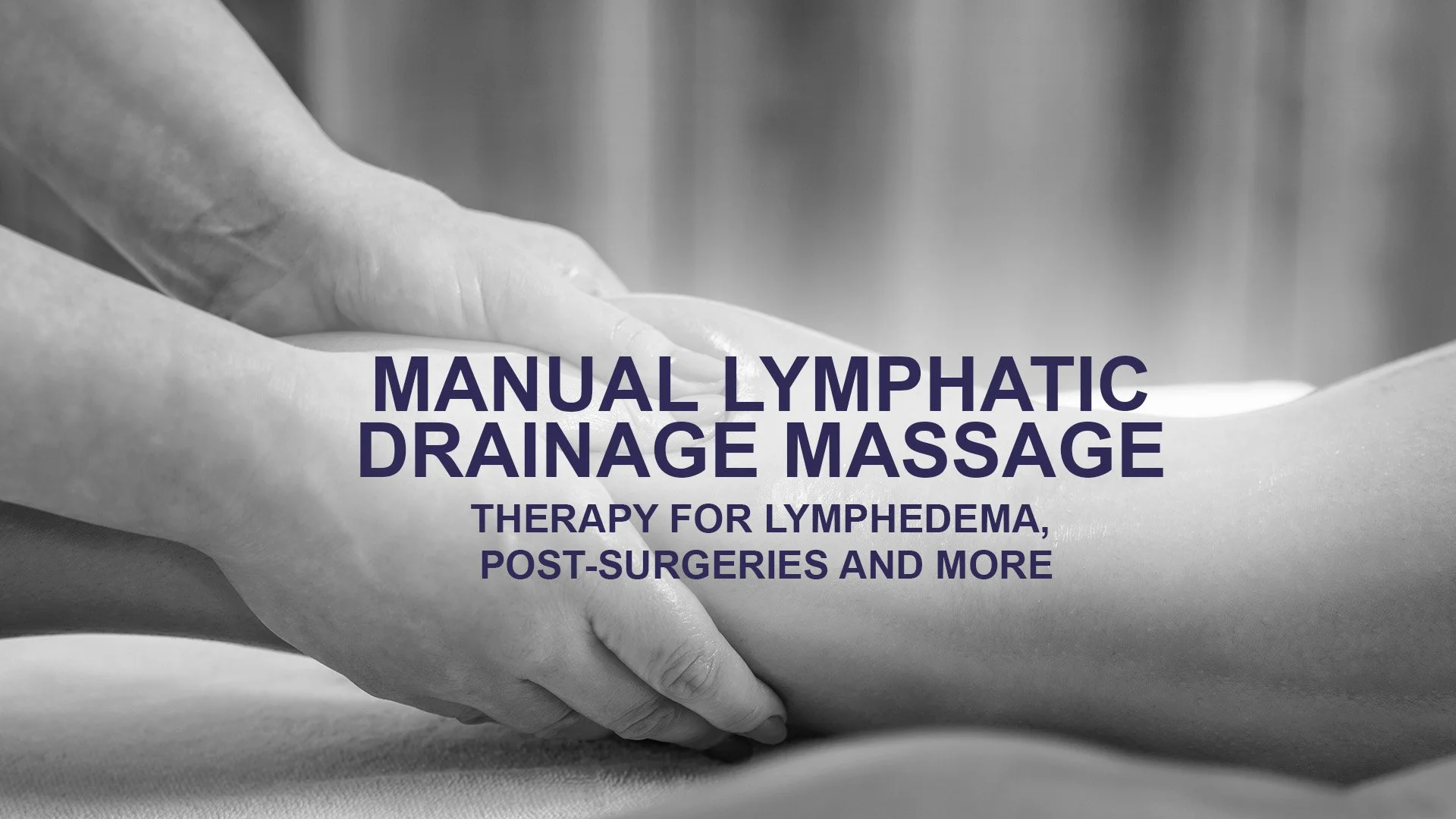
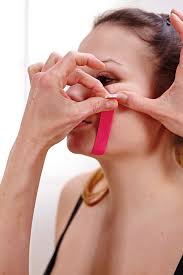
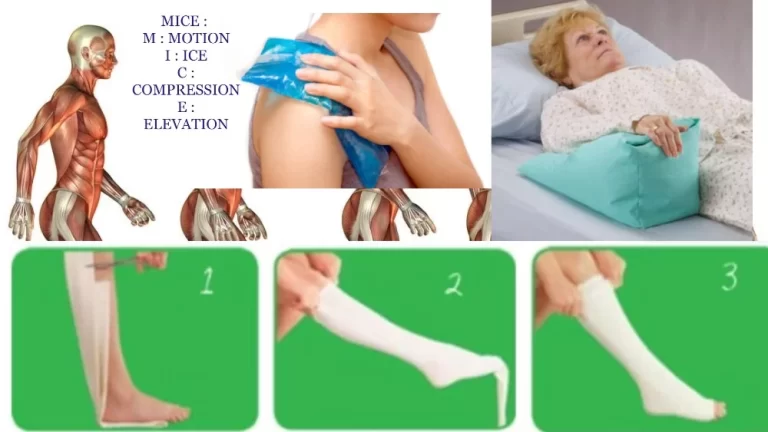

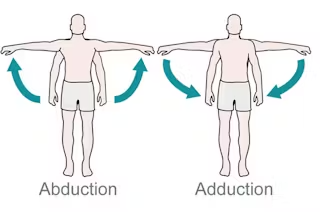

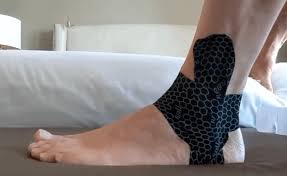
One Comment